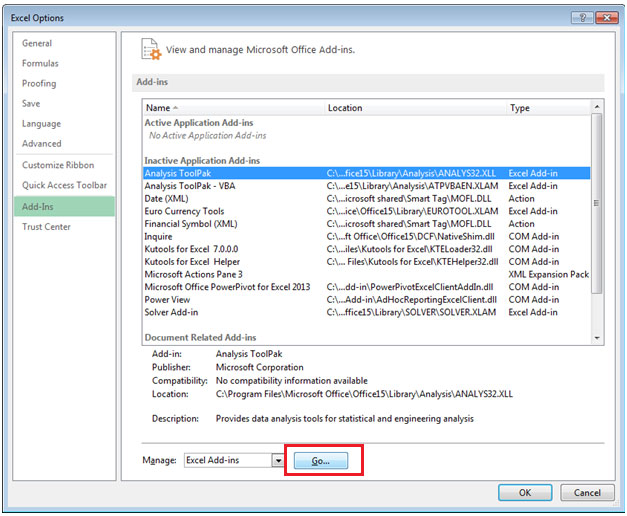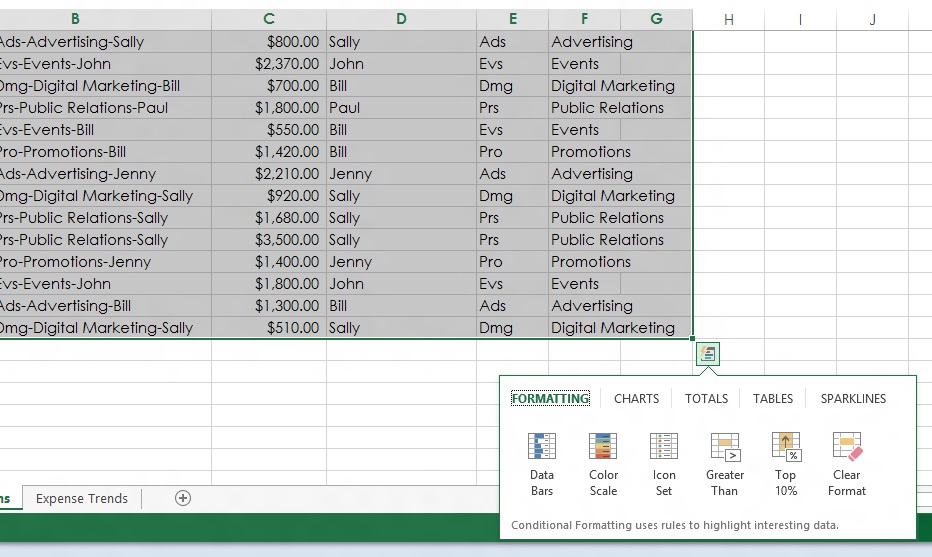
- DATA ANALYSIS PACKAGE FOR EXCEL FOR MAC HOW TO
- DATA ANALYSIS PACKAGE FOR EXCEL FOR MAC INSTALL
- DATA ANALYSIS PACKAGE FOR EXCEL FOR MAC FULL
In this case, you insert the range B2:E9 in the Input Range field (of the dialog box of Figure 2) and select the Columns radio button. Suppose, by way of example, this data consists of a 4 × 8 array representing 4 treatments as in Figure 3. The Input Range consists of the Excel range where the data elements to be analyzed are stored.

You will now be presented with the dialog box shown in Figure 2.įigure 2 – Dialog box for Anova: Single Factor option Now suppose by way of example that you choose Anova: Single Factor. t-Test: Two-Sample Assuming Unequal VarianceĮach of these options represents a data analysis tool that will be described on this website.t-Test: Two-Sample Assuming Equal Variance.

You can now select any one of the following options useful for statistical analysis: You will then be able to access the data analysis tools.Īfter selecting Data > Analysis|Data Analysis you will be presented with the dialog box in Figure 1. Next, you select the Analysis ToolPak option on the dialog box that appears and click the OK button. This is done by selecting Office Button > Excel Options > Add-Ins in Excel 2007 or File > Help|Options > Add-Ins in versions of Excel starting with Excel 2010, and clicking the Go button at the bottom of the window.
DATA ANALYSIS PACKAGE FOR EXCEL FOR MAC INSTALL
If this option is not visible you may need to first install Excel’s analysis tool pack.
DATA ANALYSIS PACKAGE FOR EXCEL FOR MAC HOW TO
There are also worked examples showing how to use centering, the covariance matrix, imprecision contours, and Wiener filtering and custom functions for bisections, Lagrange interpolation, Euler and Runge-Kutta integration.Excel provides a number of data analysis tools, which are accessible via Data > Analysis|Data Analysis. Detailed descriptions and sample applications of standard and specialized uses of least squares for fitting data to a variety of functions, including resolving multi-component spectra standard processes such as calibration curves and extrapolation custom macros for general "error" propagation, standard deviations of Solver results, weighted or equidistant least squares, Gram-Schmidt orthogonalization, Fourier transformation, convolution and deconvolution, time-frequency analysis, and data mapping. These macros and functions are provided in uncompiled, computer-readable, easily modifiable form readers can therefore use them as starting points for making their own personalized data analysis tools. It also includes and describes a number of sample macros and functions to facilitate common data analysis tasks.

It focuses on three areas-least squares, Fourier transformation, and digital simulation-and illustrates these with extensive examples, often taken from the literature.

Advanced Excel For Scientific Data Analysis takes off from where most books dealing with scientific applications of excel end.
DATA ANALYSIS PACKAGE FOR EXCEL FOR MAC FULL
Excel is by far the most widely distributed data analysis software but few users are aware of its full powers.


 0 kommentar(er)
0 kommentar(er)
